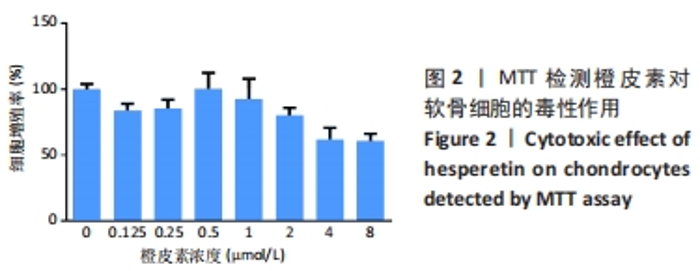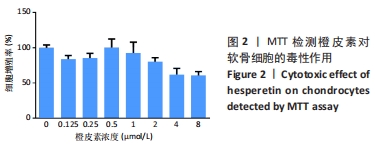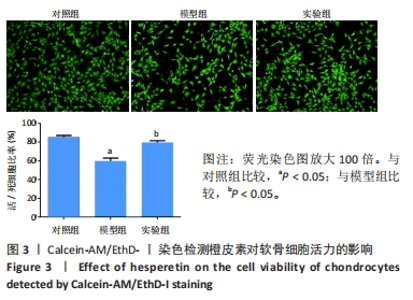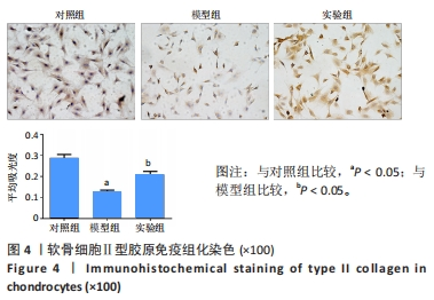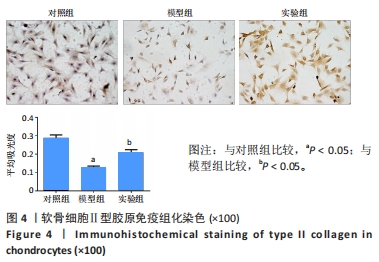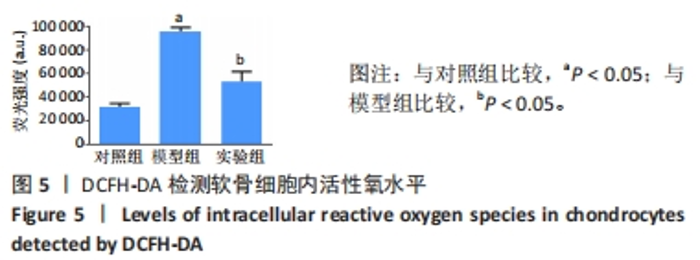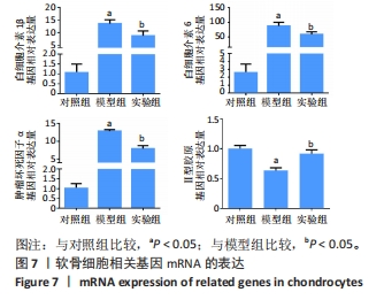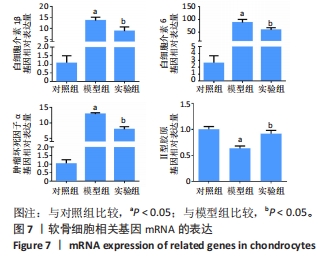[1] COURTIES A, BERENBAUM F, SELLAM J. The Phenotypic Approach to Osteoarthritis: A Look at Metabolic Syndrome-Associated Osteoarthritis. Joint Bone Spine. 2019;86(6):725-730.
[2] ZHANG X, CAI D, ZHOU F, et al. Targeting downstream subcellular YAP activity as a function of matrix stiffness with Verteporfin-encapsulated chitosan microsphere attenuates osteoarthritis. Biomaterials. 2020; 232:119724.
[3] JOSHI A, IYENGAR R, JOO JH, et al. Nuclear ULK1 promotes cell death in response to oxidative stress through PARP1. Cell Death Differ. 2016; 23(2):216-230.
[4] 郭琴,吴敏敏,陶莹.氧化修饰高密度脂蛋白激活活性氧启动 p38 信号促使大鼠卵巢颗粒细胞凋亡[J].中国组织工程研究,2024, 28(19):3055-3060.
[5] SCHLÜTER KD, WOLF A, WEBER M, et al. Oxidized low-density lipoprotein (oxLDL) affects load-free cell shortening of cardiomyocytes in a proprotein convertase subtilisin/kexin 9 (PCSK9)-dependent way. Basic Res Cardiol. 2017;112(6):63.
[6] SEBASTIAN S, ZHU YX, BRAGGIO E, et al. Multiple myeloma cells’ capacity to decompose H2O2 determines lenalidomide sensitivity. Blood. 2017;129(8):991-1007.
[7] 谢婷,刘婷婷,曾雪慧,等.维生素 D3 减轻高糖暴露诱导氧化应激促进人脐带间充质干细胞的成骨分化[J].中国组织工程研究, 2024,28(19):2981-2987.
[8] 章家皓,刘予豪,周驰,等.氧化应激促进成骨细胞铁死亡介导激素性股骨头坏死的病理过程[J].中国组织工程研究,2024,28(20): 3202-3208.
[9] SHIN HJ, PARK H, SHIN N, et al. p47phox siRNA-Loaded PLGA Nanoparticles Suppress ROS/Oxidative Stress-Induced Chondrocyte Damage in Osteoarthritis. Polymers (Basel). 2020;12(2):443.
[10] YAO J, LONG H, ZHAO J, et al. Nifedipine inhibits oxidative stress and ameliorates osteoarthritis by activating the nuclear factor erythroid-2-related factor 2 pathway. Life Sci. 2020;253:117292.
[11] QU ZA, MA XJ, HUANG SB, et al. SIRT2 inhibits oxidative stress and inflammatory response in diabetic osteoarthritis. Eur Rev Med Pharmacol Sci. 2020;24(6):2855-2864.
[12] 来利红,汪晓东,杨兰,等.橙皮素调控Nrf2/ARE通路改善载脂蛋白E基因敲除小鼠动脉粥样硬化的实验研究[J].中西医结合心脑血管病杂志,2023,21(5):821-827.
[13] 罗娟,楼迪栋,肖巧巧,等.橙皮素通过Nrf2/HO-1信号通路对非酒精性脂肪肝体外模型氧化应激的保护作用[J].中国比较医学杂志,2022,32(6):1-6.
[14] RUAN H, LV Z, LIU S, et al. Anlotinib attenuated bleomycin-induced pulmonary fibrosis via the TGF-β1 signalling pathway. J Pharm Pharmacol. 2020;72(1):44-55.
[15] 李岩溪,张昊,国星奇,等.橙皮素对结肠癌HCT116细胞凋亡、迁移与侵袭的影响及机制研究[J].解剖科学进展,2020,26(2):196-200.
[16] HASSAN AK, EL-KALAAWY AM, ABD EL-TWAB SM, et al. Hesperetin and Capecitabine Abate 1,2 Dimethylhydrazine-Induced Colon Carcinogenesis in Wistar Rats via Suppressing Oxidative Stress and Enhancing Antioxidant, Anti-Inflammatory and Apoptotic Actions. Life (Basel). 2023;13(4):984.
[17] LIU Z, TU K, ZOU P, et al. Hesperetin ameliorates spinal cord injury by inhibiting NLRP3 inflammasome activation and pyroptosis through enhancing Nrf2 signaling. Int Immunopharmacol. 2023;118:110103.
[18] LEE A, GU H, GWON MH, et al. Hesperetin suppresses LPS/high glucose-induced inflammatory responses via TLR/MyD88/NF-κB signaling pathways in THP-1 cells. Nutr Res Pract. 2021;15(5):591-603.
[19] WANG SW, SHENG H, BAI YF, et al. Inhibition of histone acetyltransferase by naringenin and hesperetin suppresses Txnip expression and protects pancreatic β cells in diabetic mice. Phytomedicine. 2021;88:153454.
[20] 刘蕊,李晓丹.柑橘属黄酮类化合物橙皮苷和橙皮素的抗氧化和抗炎特性分子机制综述[J].中国医药导刊,2019,21(12):749-752.
[21] 雷静文,郭小莉,宋丽华,等.香叶木素对高糖诱导的血管内皮细胞损伤的保护作用[J].中国临床药理学杂志, 2022,38(22):2679-2683.
[22] XU H, DING X, LI L, et al. Tri-element nanozyme PtCuSe as an ingenious cascade catalytic machine for the amelioration of Parkinson’s disease-like symptoms. Front Bioeng Biotechnol. 2023;11:1208693.
[23] 王旭东,韩俊柱,王文锐,等.二甲双胍激活核因子E2及相关通路保护脂多糖诱导的软骨细胞损伤[J].中国组织工程研究,2023, 27(26):4147-4153.
[24] AN MF, SHEN C, ZHANG SS, et al. Anti-hyperuricemia effect of hesperetin is mediated by inhibiting the activity of xanthine oxidase and promoting excretion of uric acid. Front Pharmacol. 2023;14:1128699.
[25] YANG AY, CHOI HJ, KIM K, et al. Antioxidant, Antiapoptotic, and Anti-Inflammatory Effects of Hesperetin in a Mouse Model of Lipopolysaccharide-Induced Acute Kidney Injury. Molecules. 2023; 28(6):2759.
[26] LIU P, CHEN J, QI J, et al. Hesperetin ameliorates ischemia/hypoxia-induced myocardium injury via inhibition of oxidative stress, apoptosis, and regulation of Ca2+ homeostasis. Phytother Res. 2023;37(5):1787-1805.
[27] ZHAO H, XIAN G, ZENG J, et al. Hesperetin, a Promising Dietary Supplement for Preventing the Development of Calcific Aortic Valve Disease. Antioxidants (Basel). 2022;11(11):2093.
[28] 郭玲,王兆领,黄振.橙皮素通过circ-0039411/miR-296-5p影响IL-1β诱导的软骨细胞凋亡[J].免疫学杂志,2022,38(2):151-156+163.
[29] LIN Z, FU C, YAN Z, et al. The protective effect of hesperetin in osteoarthritis: an in vitro and in vivo study. Food Funct. 2020;11(3): 2654-2666.
|


